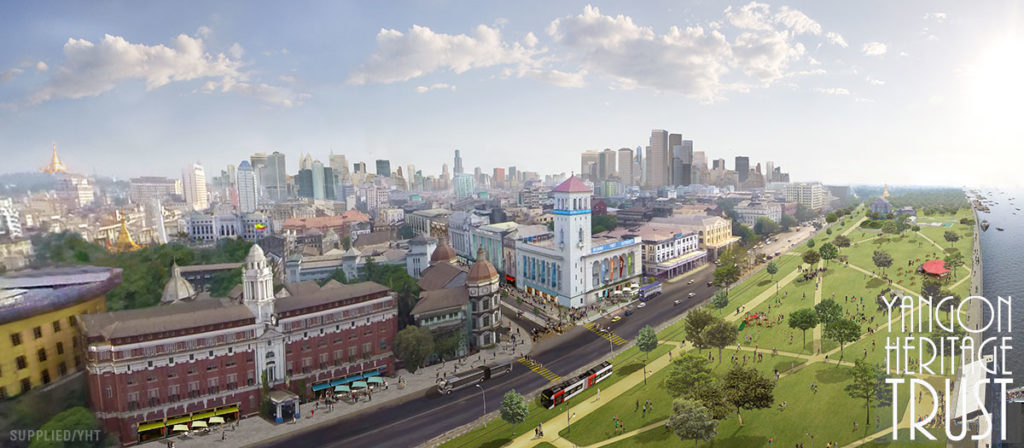
With the largest collection of colonial-era architecture of any city in Southeast Asia, walking down the streets of Yangon can feel a bit like stepping back into a different time. Strolling down Strand or Maha Bandula Road, it’s easy to imagine the bustling city of colonial commerce and administration of yesteryear.
But as Myanmar begins to welcome more and more visitors (and the foreign investment that follows), Yangon’s colonial past is at risk of conflicting with the city’s dreams of a modern, regional hub. Founded in 2012, the Yangon Heritage Trust, also known as “YHT” seeks to balance these aspirations, not only developing Yangon into Asia’s most liveable city, but also one that holds tightly to its history. In a region known for rapid development, Yangon is wary of falling into the missteps of neighbors like Singapore and Bangkok. Here’s a list of just a few of the city’s must-see properties.
The Minister’s Office
Serving as the seat of the British government’s rule in Myanmar, The Minister’s (or Secretariat’s) Office is a massive U-shaped complex in downtown Yangon between Anawartha and Maha Bandula Road. The Victorian, red and yellow building served as the seat of power of the colonial government, but has sat vacant since the opening of the new capital in Naypyidaw.
Yangon City Hall
A classic example of Burmese architecture, Yangon’s city hall was designed by famed architect U Tin, who also designed the Central Railway Station. The building incorporates classic symbols of Myanmar design such as mythical lion figures and peacocks, as well as a system of traditional tiered roofs called pyatthat. It is still in use, serving as the home of the Yangon City Development Committee.
Accountant General’s Department and Currency
This building was the headquarters of the colonial government’s revenue services, collecting monies that came from the sale of opium and salt, the enforcement of customs duties, as well as the operation of Myanmar’s railroads, post offices and telegraphs. Photos of the building’s interior, specifically the ornately winding circular staircase are popular on social media and travel blogs. Part of the complex now houses the Yangon Divisional Court.
High Court Building
The High Court Building on Pansodan Street was the home of the Supreme Court of Myanmar, until the government’s 2006 move to Naypyidaw. It remains notable for its distinct Queen Anne Style architecture, marked by a large clock tower which lights up at night. Plans are currently underway to turn the building into a national theater and museum celebrating Thabin, Myanmar puppet art.
Inland Water Transport Building
A former Small Causes Court and Police Commissioners Building, the defunct state house at 44-54 Pansodan Road will soon be turned into 240-room, five-star hotel by one of our clients, Kempinski. Officially dubbed the Heritage Hotel Kempinski Yangon, the development will hold true to the building’s rich history, while also embodying the luxury Kempinski seeks to provide its guests all over the world. As part of our work with Kempinski, we created a brand identity and brand story reflecting Myanmar’s cultural diversity and the unique geographic regions of the country.
About Yangon Heritage Trust (YHT)
YHT advocates for heritage protection, develops clear and sustainable policy options, engages with government, business and civil society, communicates its ideas to the widest possible audience, undertakes specific conservation projects, and facilitates research and training.
YHT offers guided walking tours three times a week with local experts on hand, but the buildings can also be seen during daily life in Yangon.
